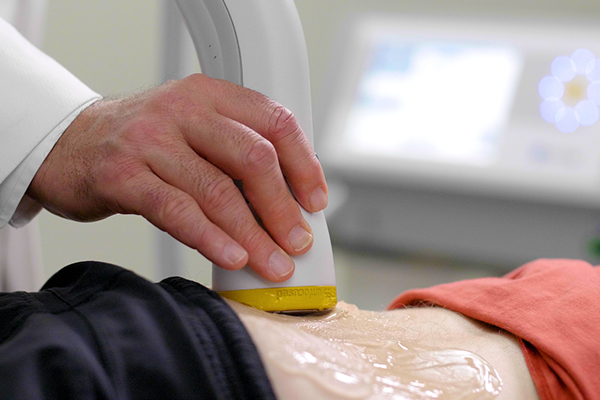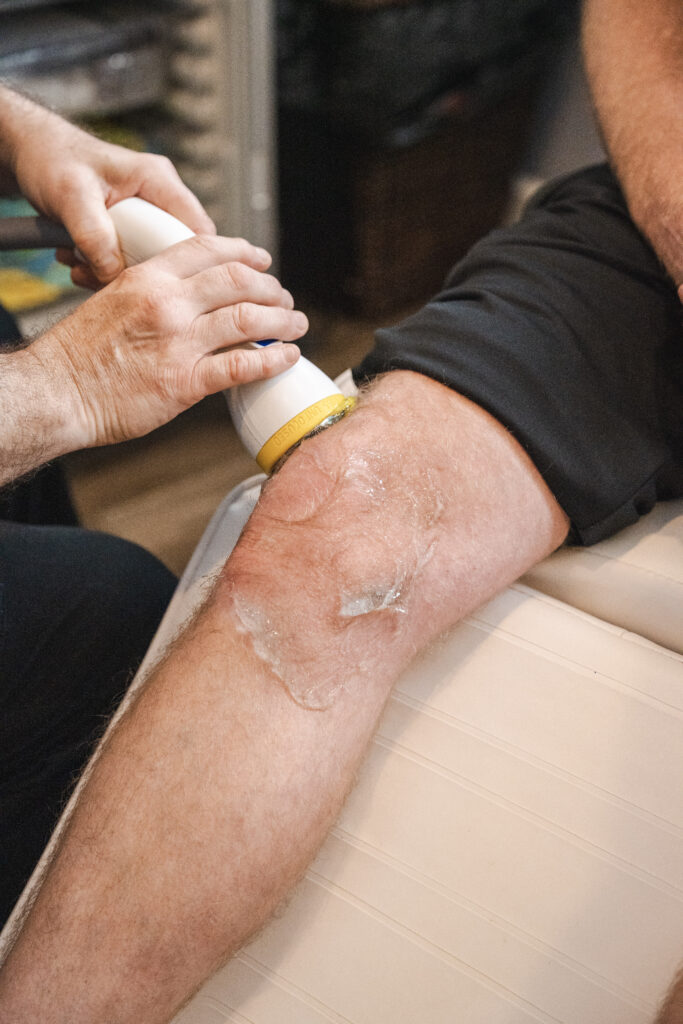Neuropathy is a term used for nerve damage, and it can have multiple causes. Here are some of the common causes of neuropathy:
- Diabetes: Long-term high blood sugar levels can damage the nerves, leading to diabetic neuropathy.
- Chemotherapy: Some chemotherapy drugs can cause peripheral neuropathy.
- Physical trauma: Injuries or accidents can cause nerve damage.
- Autoimmune diseases: Conditions such as lupus and rheumatoid arthritis can cause neuropathy.
- Vitamin deficiencies: Lack of vitamins, especially B12, can damage the nerves.
- Medications: Certain medications can have neuropathy as a side effect.
- Chronic infections: Infections such as Lyme disease can cause nerve damage.
- Genetic disorders: Certain inherited disorders can cause neuropathy.
It’s important to note that these are just some of the most common causes of neuropathy. If you are experiencing knee pain, you can learn if your condition is suitable for treatment and try shockwave therapy with our New Patient Special.
Benefits of Shockwave Therapy for Neuropathy
Shockwave therapy emerges as a promising non-invasive alternative for treating neuropathy. This therapy employs high-energy shock waves to stimulate the body’s natural healing process in the damaged nerves. Here are the benefits of using shockwave therapy for neuropathy:
Accelerated Healing
Shockwave therapy encourages the body’s natural healing process by using high-energy sound waves. It helps in the repair of damaged nerves and improving circulation in the affected area, which is particularly beneficial for those suffering from neuropathy.
Reduced Dependency on Medications
Traditional treatments for neuropathy often include medications that can have undesirable side effects. Shockwave therapy is a drug-free alternative that can decrease the need for pain medication or other treatments, making it an appealing choice for those seeking non-pharmaceutical options.
Improved Quality of Life
Neuropathy can significantly affect an individual’s quality of life by causing pain, numbness, or weakness. Shockwave therapy can alleviate symptoms, enhance mobility, and enable individuals to regain normalcy in their daily activities.
Non-Invasive and Safe
Shockwave therapy does not involve any incisions or anesthesia and has a low risk of complications, which makes it an ideal option for those who wish to avoid invasive procedures.
Overall, shockwave therapy is a promising treatment option for those suffering from neuropathy.
How Shockwave Therapy Works
Shockwave therapy is a non-invasive treatment that uses high-energy acoustic waves to stimulate the body’s natural healing process. Here’s how it works:
What is a Shockwave?
Shock waves are rapid acoustic pulses that consist of a high-pressure surge followed by a comparatively lower-pressure trough. These phenomena are a part of our everyday life and can be produced by various sources such as supersonic aircraft, explosions, lightning, earthquakes, or any other event that causes a change in air pressure.
How do Shockwaves Treat Neuropathy?
A device is used to generate and safely deliver shockwaves to the affected area. These shockwaves can promote healing at the cellular level, improve blood supply, and trigger the body’s natural healing process, which is crucial in treating nerve damage due to neuropathy.
Types of Shockwave Therapy
There are several types of shockwave therapy, including radial shockwave therapy (RSWT), focused shockwave therapy (FSWT), and acoustic wave therapy (AWT).
Radial Shockwave Therapy uses a hand-held device that applies pressure waves to the skin’s surface. This type of shockwave therapy is a popular option for treating conditions like plantar fasciitis and Achilles tendinopathy. When applied to areas affected by neuropathy, it may help in improving circulation and reducing pain and numbness in the extremities.
Focused Shockwave Therapy uses a device that delivers high-intensity shockwaves directly to the affected area. This type of shockwave therapy is often used for treating chronic conditions like bone fractures that are slow to heal. In the context of neuropathy, focused shockwave therapy can be targeted at nerve tissues, potentially promoting regeneration and reducing symptoms.
Acoustic Wave Therapy uses a device that delivers low-intensity shockwaves to the affected area. For patients with neuropathy, this therapy can be used to improve blood flow, reduce pain and inflammation, and promote nerve healing. It is considered a gentler option compared to high-intensity shockwaves.
Unfocused Shockwave Therapy delivers high-intensity shockwaves that penetrate a wider and deeper area of tissue (7cm x 12cm) compared to focused shockwaves (1cm x 12cm) or radial waves (2cm x 2cm). This can be particularly effective for neuropathy as it can address nerve damage over a broader area. SoftWave is a type of unfocused shockwave treatment available in the US. It might require fewer sessions compared to radial or focused shockwave treatments.






